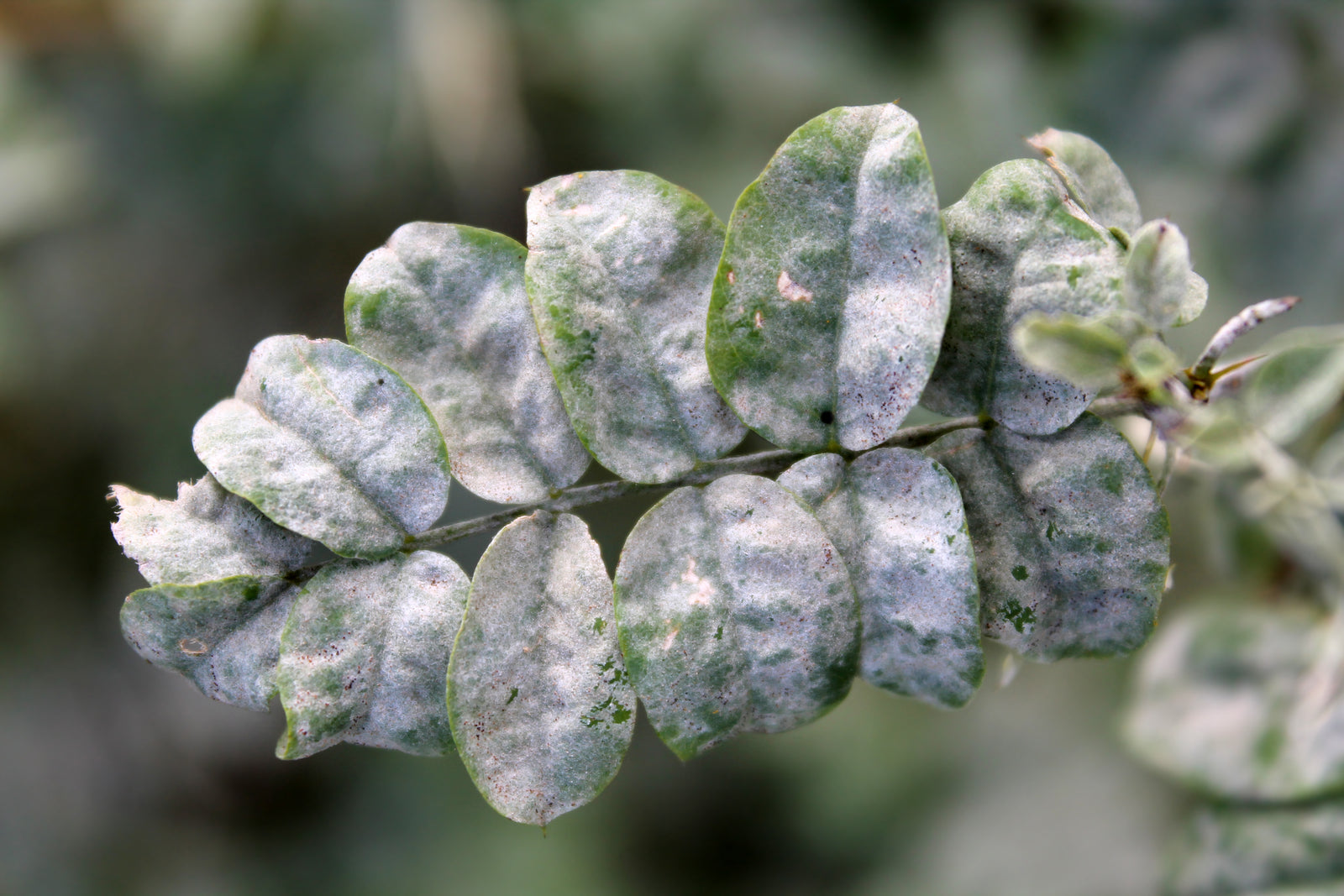
Are you noticing a white, fuzzy substance on the leaves of your plants? Chances are, it's a fungal disease called powdery mildew. This is a common occurrence on many types of plants, and you'll want to take action to prevent it from spreading. Here's our advice for dealing with powdery mildew.
Quick Answer
White Fuzz On Plants
Here are some methods to choose from:
- Pruning
- Conventional spray
- Organic spray
- DIY spray solutions

----
A Comparison
White Fuzz On Plants
|
Method
|
Details |
| Pruning | Remove and destroy affected areas |
| Conventional spray | Spectracide® for non-crop use |
| Organic spray | Neem oil (Bayer®, Green Light®) |
| DIY spray solutions | Can be made with garlic or baking soda |
Read on for our recommendations for each of these methods.
Powdery Mildew 101
White Fuzz On Plants: How To Deal With Powdery Mildew
When you understand what causes mildew, how to prevent it, and how to treat it when necessary, you can be better prepared to combat this disease next time around.

1. What causes powdery mildew?
Powdery mildew thrives in temperatures between 60 and 80 degrees. Poor air circulation and dry, shady conditions are ideal for its growth. Anytime there’s a sudden change from wet or humid conditions to warmer, dry conditions, your plants are at higher risk of infection. However, the spores are sensitive to extreme heat and direct sunlight.
All species of powdery mildew fungi require living plant tissue to grow. On perennials, they survive on buds and stem tissue. Certain weeds will also act as hosts throughout the winter. The optimum temperature for infection is between 68 to 77 degrees F with relatively low humidity between 40 to 100%.
The mildew can spread rapidly since the disease cycle can be completed in as little as 72 hours. However, it commonly takes 7-10 days from the time of infection to the development of symptoms and secondary spore production.
2. Methods to get rid of powdery mildew
Pruning will prevent the mildew’s spread by removing infected parts and increasing airflow. Trim plants that get crowded or bushy, and remove any leaves that show signs of infection. Inspect plants regularly during warm, dry conditions. Destroy (do not compost!) infected plant parts.
If the infestations are severe, remove and destroy the plants that are infected. Disinfect your pruning tool in a bleach solution of one part household bleach to four parts water after each cut.
Conventional fungicide sprays such as Spectracide® Immunox Multi-Purpose Fungicide can be used when dealing with non-crop applications.
You have a number of options for organic sprays, such as Green Light® Lawn & Garden Spray, Monterey® Lawn & Garden Spray, and Green Light® Neem Concentrate. Neem oil treats existing powdery mildew and protects the plant against further infection. Synthetic options are Bayer® All-in-One Rose & Flower Care or Spectracide® Fungus Control Products.

You can also make your own organic spray! Sulfur is highly effective against powdery mildew if used in a protectant program with a minimum of 7 to 14 days between applications. Garlic naturally contains high levels of sulfur and a few cloves crushed in water can be used to make a homemade spray.
Apply a sulfur-based fungicide at the first evidence of mildew and repeat applications as necessary. Proper timing of fungicide applications is critical to successful control, so make sure to begin at the first sign of the disease. However, note that sulfur can be damaging to some squash and melon varieties.
Another option is to spray once a week with a solution of baking soda. Baking soda increases the surface pH of the leaf, making it unsuitable for the growth of powdery mildew spores. Be sure to spray the undersides of leaves as well as the upper surfaces when using any of these sprays.

3. How to prevent powdery mildew
In most cases, good cultural practices will adequately control powdery mildew:
- Select powdery mildew-resistant varieties. This is particularly true of roses. For lawns, you can plant shade-tolerant grasses such as creeping red fescue.
- Plant in full sunlight in a well-drained area.
- Do not crowd plants. Airflow and ventilation will discourage mildew growth, so try to keep excess growth trimmed.
- Powdery mildew thrives with high levels of nitrogen. High nitrogen promotes tender leaf formation, causing dense stands that are more susceptible to infections. Organic fertilizers or slow-release formulations of lawn fertilizers are good choices.
- Watering plants in the morning gives the plants the rest of the day to dry off, discouraging the establishment of diseases like powdery mildew. For the same reason, try not to plant too close to a sprinkler.
You’re ready to save your plants from powdery mildew! Stop by the nearest Grangetto’s location to find products and more expert advice for preventing and treating mildew and other plant diseases.
More Resources:



